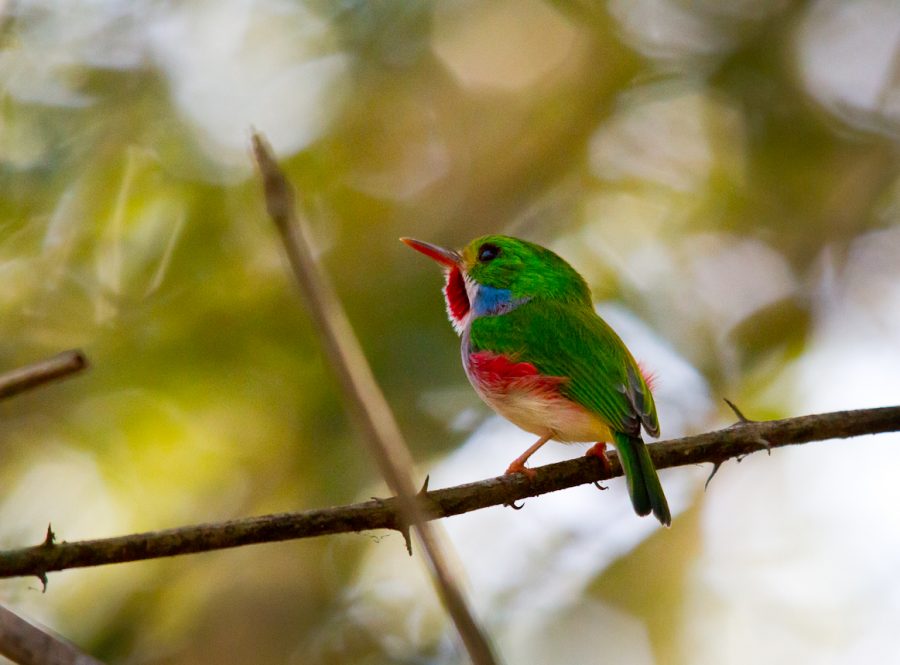From prison to paradise
Balanced on a branch, the colorful Cuban tody perches in its natural habitat: the Zapata Swamp. While visiting Cuba, biologist Joe Roman and his students spotted the tody as well as six other endemic birds.
April 21, 2016
In 2008, a significant part of the Obama campaign promise was to shut down the American prison camp at Guantanamo Bay. The year is now 2016, and the President is nothing but exasperated in his attempts, faced with unending resistance in a Republican-majority Congress. “As a nation, if we don’t deal with this now, when will we deal with it?” he expressed in his 17-minute address to Congress. As the nation marks time with indignation, we must all consider the following: what is to be of Guantanamo post-closure? Conservation Biologist Joe Roman and his colleagues at the University of Vermont have contemplated exactly that. Their proposal? Turning GTMO into a marine research center joint-run by the U.S. and Cuba.
In an interview with Joe Roman, the biologist described the research center as, “A peace park where people from all over the world can meet to answer big questions, like the decline in coral reefs, the sixth extinction and global warming.” One of the many facets of Roman’s proposal would include working in part with Cuban conservationists for a common cause. Cuban scientists would be able to access state of the art equipment while working with Americans to encourage collaboration between the countries.
Guantanamo Bay would be the location for such a research center because of its proximity to a unique, untouched habitat. Cuba’s path of environmental consciousness has left the area isolated for nearly 100 years. “Anytime you have that untouched natural habitat and you can study it for science, it is a great thing,” said AP Environmental Science teacher, Timothy Blough. “It would be a smart way to keep the Coral Reef thriving because it would be for research, and it wouldn’t allow people to fish or degrade it.”
Roman’s initial idea for the facility began last summer after doing a workshop in Cuba. Since then, he most recently visited the Zapata Swamp, located 150 km south of Havana. With him was a group of students from the U.S. and Cuba–and what they found was remarkable. “We saw seven endemic birds within a matter of two hours. These birds are found nowhere else in the world except for this swamp.” Among those birds were Cuban tody, the Cuban pygmy owl and the Zapata wren. Roman and his students also met with Cuban conservationists working on ground to save the highly endangered Cuban gar fish and the rose-throated Cuban parrot.
Although the debate of Guantanamo’s closure plods on, Roman ends on a positive note; “I am optimistic that will change,” Roman expressed. “I am not sure when, but I am optimistic.”












